Building muscle, a process called hypertrophy, takes time, energy, commitment, and hard work. Unfortunately, a lot of people fail to make much progress and often become disillusioned with strength training. They may even quit altogether.
In many cases, lack of progress is not due to too little effort or commitment. Rather, it’s because the training is not optimized for muscle growth.
While hard work IS part and parcel of successful strength training, that hard work needs to be directed toward the goal of building muscle. Just because something is tough to do doesn’t mean it’ll trigger hypertrophy.
For example, doing 100 burpees under the hot sun wearing a weighted vest is hard, but it won’t build muscle. Going for a long run after not eating or sleeping for 24 hours is also hard, but, again, it won’t build muscle.
A lot of workouts emphasize intensity, but do not direct that intensity where it needs to go to produce the best possible results. You need to train hard AND smart!
According to the fitness law of specificity, your body adapts to the type of workout you do. So, to optimize hypertrophy, you need to train in a very specific way.
Level Up Your Fitness: Join our 💪 strong community in Fitness Volt Newsletter. Get daily inspiration, expert-backed workouts, nutrition tips, the latest in strength sports, and the support you need to reach your goals. Subscribe for free!
There are thousands of ways to organize your training and probably millions of workouts to follow, but some are better than others. The best workouts will take you closer to your hypotrophy goals, while the poorly designed ones will take you further away.
In this article, we reveal the hierarchy of successful bodybuilding training. Make sure that whatever workout program you follow meets these criteria.
The Hierarchy of Successful Hypertrophy Training
Looking at many bodybuilding programs on the internet, it’s clear that some people are better at writing workouts than others. So while there are some great plans out there, there are probably just as many ineffective ones.
While you can avoid following a poorly written workout by designing your own, this is not always easy and can be time-consuming. That’s what makes online programs so appealing.
Needless to say, the workouts on Fitness Volt are AWESOME!
The next time you look at a workout program, make sure it contains the following characteristics, which are listed in order of importance. If any of these things are missing, or are being over-emphasized, reject that workout and look for another.
Note: Some items below relate to the workout itself, while others relate to how it should be performed. Tick all these boxes, and your training is far more likely to produce the results you want!
1. Adherence and consistency
Many exercisers spend too much time worrying about the minutia of their workouts and too little time actually training. Even the best training plan in the world won’t work if you don’t do it!
Ultimately, adherence and consistency will pay off even if your workout plan sucks. It’ll undoubtedly be more effective than the workout you do not do!
So, regardless of your chosen training plan, make sure you can stick to it and do it consistently. Not for a week or a month, but for the foreseeable future. For some, this may mean three full-body workouts a week, while for others, it may be a bro split. Choose the approach you know you can stick to.
It takes years to build muscle, and you’ll never see the results you want without adherence and consistency.
Take-home point: No workout will produce results if you can’t stick to it. This is THE most crucial consideration for hypertrophy training.
2. Proximity to failure
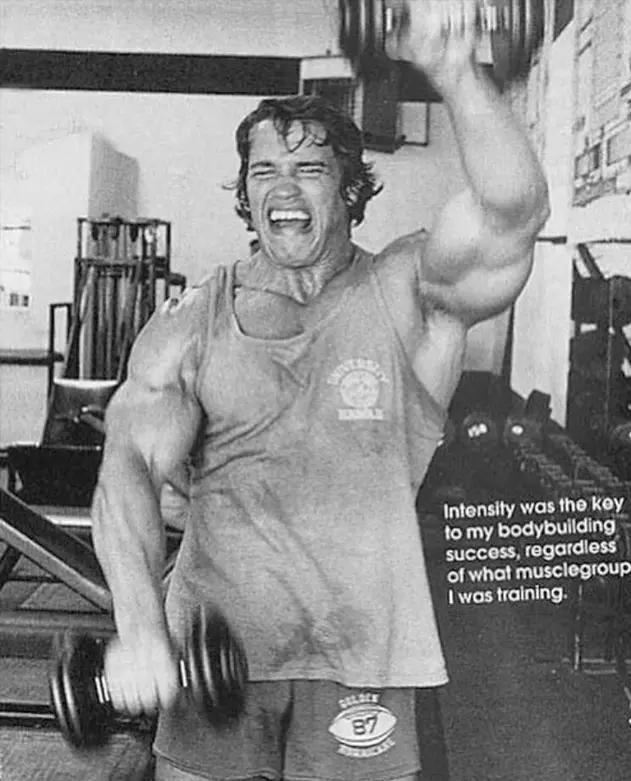
Even the best workout will not trigger hypertrophy if you don’t train hard enough. In contrast, training hard, even while following a poorly designed workout, could lead to muscle growth.
A lot of workouts specify things like three sets of eight reps using 80% of your one repetition maximum, or 1RM. Unfortunately, following this prescription does not guarantee results.
For example, if you stop at eight reps but could have done ten or 12, you won’t trigger hypertrophy. Instead, you must take your sets close to failure to build muscle. Easy workouts won’t do it.
Studies suggest you should take your sets to within 1-3 reps of failure to maximize hypertrophy (1). That means terminating your set just before you are unable to do any more reps with strict technique. This is sometimes called form failure.
You don’t need to train to complete muscle failure to trigger hypertrophy. In fact, doing so may be detrimental to your progress because it takes longer to recover from such high-intensity workouts.
While easy workouts are beneficial during deloads, you must train with sufficient intensity most of the time. So, don’t just stop because your workout specifies a certain number of reps. Instead, keep pumping out the reps until your muscles are within 1-3 reps of failure.
Take-home point: You must challenge your muscles to make them grow. While you don’t have to train to failure, you should come pretty close.
3. Progressive overload
Your body is very adept at adapting to new stresses. That’s a good thing because humans would probably have died out long ago if they weren’t. Training is a form of stress, and your body responds to it by getting fitter, stronger, and more muscular.
However, if the stress remains unchanged for too long, your body has no need to continue adapting, and your progress will stall.
For example, if you always do three sets of ten bench presses with 225 pounds and resting 90 seconds between sets, your body will get used to that workout. There is no stimulus for growth.
So, to continue building muscle, your workouts need to be progressive, which means they must get more demanding over time (2).
Your rate of progression will depend on your training experience. Beginners can often progress from one week to the next as their body’s adapt very quickly to training. In contrast, more experienced exercisers, who are close to their genetic potential, build muscle more slowly, and their progress is usually a lot less dramatic.
Regardless of your training status, you should strive to make your workouts more challenging over time. Ways to do this include:
- Lifting more weight
- Doing more reps
- Shortening inter-set rest periods
- Doing more sets
- Changing exercises (from simple to more complex)
However, avoid changing too many things at once. Too much variety can undermine your progress. Instead, focus on one variable for a few weeks, e.g., adding weight, and then switch to another, such as doing more reps. This is a far more effective and quantifiable way to progress your workouts.
Also, avoid program hopping or changing exercises too often. You need some stability in your training to anchor the other variables. Too much “muscle confusion” can be a bad thing.
Take-home point: Keep your muscles growing by forcing them to progressively work harder. If you don’t, your progress will stall, even if you are following a well-designed program.
4. Exercise selection
There are lots of different exercises you can use to train your muscles, and some are better than others. In general, the most effective exercises are a) the ones that allow you to lift the greatest loads, b) that you feel in the target muscles, and c) can perform safely.
Because of these variables, it’s clear that the best exercises for one person may not be the best for another.
For example, some lifters get incredible muscle-building results from basic barbell squats and bench presses. To them, these exercises are the most effective way to build muscle.
In contrast, other lifters just aren’t made to be good squatters or benchers, and doing these exercises could lead to poor results and even injuries.
So, your workout may fail to trigger hypertrophy because the exercises it contains do not suit your body type or biomechanics. Because of this, you may need to experiment to determine the best exercises for you and then modify your workouts accordingly.
Level Up Your Fitness: Join our 💪 strong community in Fitness Volt Newsletter. Get daily inspiration, expert-backed workouts, nutrition tips, the latest in strength sports, and the support you need to reach your goals. Subscribe for free!
For example, if barbell bench presses don’t light up your pecs, try using dumbbells, a Smith machine, or a chest press. You might even get better results from chest dips.
So, remember that there is no single best exercise for a particular muscle group, and what works for one person may not work for another. Therefore, you should change exercises if you know that you respond better to a different movement or training modality than the one being programmed.
Take-home point: Choose the best exercises for what you are trying to achieve. This can vary from person to person. For example, if you can’t feel your muscles working, experience joint pain, or aren’t getting good results, try a different exercise.
5. Training volume
Training volume refers to the number of sets you do per muscle group per week. A well-designed program will provide similar volume for all major muscle groups. Some workout plans are high volume, prescribing as many as 30 or more sets per muscle per week, while others are far lower, with ten or fewer sets per muscle per week.
The thing with training volume is that more sets do not always equate to more muscle growth, and there is a point of diminishing returns where doing more volume produces no additional results.
You should generally do between 10 and 20 sets per muscle group per week (3). Fewer sets can work but may not be sufficient for more experienced exercisers. In contrast, doing more than 20 is probably unnecessary and may even interfere with recovery. Junk sets, i.e., doing more volume than you need, are a waste of time and energy.
So, try and see how few sets you need to do to get the results you want, and only increase training volume when it’s part of your overall strategy for progressive overload.
You could also undulate training volume as part of a progressive workout plan, e.g.,
- 1st week – 10 sets per muscle group per week
- 2nd week – 12 sets per muscle group per week
- 3rd week – 15 sets per muscle group per week
- 4th week – 20 sets per muscle group per week
- 5th week – 10 sets per muscle group per week (increase load/reps)
- 6th week – 12 sets per muscle group per week, etc.
Take-home point: More sets are not always better. Do enough sets per muscle group to stimulate growth without undermining your recovery. For most, this is 10-20 sets per muscle group per week.
6. Training frequency
Up until the 1950s, almost everyone who lifted weights followed full-body workouts, and typically trained three times a week, e.g., Monday, Wednesday, and Friday. Then, during the so-called golden era of bodybuilding of the 1960s and 1970s, split programs became more popular, and remain so today.
While physiques have changed over the years, it’s clear that training a muscle group several times a week and training it once a week can both produce good results (4).
However, the evidence does seem to suggest that training a muscle more often may be marginally better for hypertrophy because it results in more frequent bouts of increased muscle protein synthesis. You can also train each muscle harder if you spread the volume over two or more sessions.
Training more often also means you can spread your training volume across multiple workouts. So, if you plan on doing 20 sets per body part per week, it’ll be easier to divide that volume across 2-3 workouts than do it all in one marathon training session.
All that said, your split (and, therefore, your training frequency) is largely a question of personal preference. You can follow a bro split and train your muscles once per week or a push-pull-leg split and train everything twice. Upper/lower and full-body workouts are ideal for hitting each muscle three times a week.
Because of this, there is no need to worry about what split routine you follow, so long as it allows you to train consistently and with sufficient intensity.
Take-home point: Train each muscle group 1-4 times per week. The higher your training volume, the more often you should plan on working out. However, your actual split is not all that important so just choose an approach you like and can stick to.
7. Inter-set rest periods
According to bodybuilding lore, you should rest 30-90 seconds between sets. This approach results in plenty of fatigue, and you may even find that your rep count decreases from set to set as you get more tired.
However, it seems that longer rests are also effective for hypertrophy, and inter-set breaks of 3-5 minutes can work just as well as the shorter, more traditional rests (5).
Taking short rests between big compound exercises could limit your performance as cardiovascular fatigue may bring your set to a premature end before the target muscles are suitably fatigued. In contrast, isolation exercises are less cardiovascularly demanding, and recovery tends to be quicker, so shorter rests are more appropriate.
So, don’t feel you need to use 30-90 seconds of rest for all the exercises in your workout. Programs that suggest this do not allow for the differing cardiovascular demands of some exercises over others.
Instead, rest as long as you need to so you can catch your breath. Invariably, this will be longer for exercises like squats and deadlifts and shorter for biceps curls, and calf raises.
Take-home point: Short rests and long rests can both work, so use whichever you prefer. That said, extended rest periods may be more appropriate for compound exercises that leave you out of breath.
8. Rep ranges and load allocation
Bodybuilders tend to train using 6-12 reps per set and with 67 to 85% of their 1RMs. While it’s clear that this rep and load allocation works, it’s not the only way to build muscle. In fact, studies suggest that light weight-high rep training is equally effective for building muscle (6).
Providing you train to within 1-3 reps of failure, it doesn’t seem to matter whether you do eight or 28 reps per set. The bodybuilding rep range is much broader than many people realize.
So, just because a workout specifies 6-12 reps per set doesn’t mean it’s going to be any more effective than one that prescribes 20-30 reps. Ultimately, it doesn’t matter all that much how many reps you do, as it is proximity to failure that is the main driver for hypertrophy.
However, low reps with a heavy weight are still the best way to train if you want to get stronger.
Take-home point: It really doesn’t matter how many reps you do per set, and anywhere from 6-30 will work, providing you work to within 1-3 reps of failure. But, if it’s strength what you want, lower reps and heavier loads are best.
Hypertrophy Training – Wrapping Up
There are few things worse than training hard but not seeing results. Sometimes, lack of progress is caused by a poor diet or not getting enough sleep. So, if you are working hard and going nowhere fast, make sure you are eating well and getting plenty of shut-eye.
In other instances, it could be your program’s fault or your performance of that program. Some people also pay fat too much attention to things that aren’t very important for hypertrophy and then underplay the things that are.
The nine characteristics listed in this article are in a hierarchical order, with the most important at the top and the least important at the bottom.
Make sure that whatever workout you follow, it emphasizes all the right things. Adherence and consistency, proximity to failure, and progression should be your priorities. At the same time, your training split, the number of reps, and the length of your rest periods don’t really matter all that much.
Focusing on what’s most important will ensure your workouts are as productive as possible.
References:
1. PubMed: Effects of resistance training performed to repetition failure or non-failure on muscular strength and hypertrophy: A systematic review and meta-analysis https://pubmed.ncbi.nlm.nih.gov/33497853/
2. PubMed: Progression of volume load and muscular adaptation during resistance exercise https://www.ncbi.nlm.nih.gov/pmc/articles/PMC4215195/
3. PubMed: Total number of sets as a training volume quantification method for muscle hypertrophy: a systematic review https://pubmed.ncbi.nlm.nih.gov/30063555/
4. PubMed: Equal-volume strength training with different training frequencies induces similar muscle hypertrophy and strength improvement in trained participants https://www.ncbi.nlm.nih.gov/pmc/articles/PMC8766679/
5. Research Gate: The effects of rest period lengths on muscle hypertrophy and intra- exercise performance https://www.researchgate.net
6. PubMed: Effects of different intensities of resistance training with equated volume load on muscle strength and hypertrophy https://pubmed.ncbi.nlm.nih.gov/29564973/


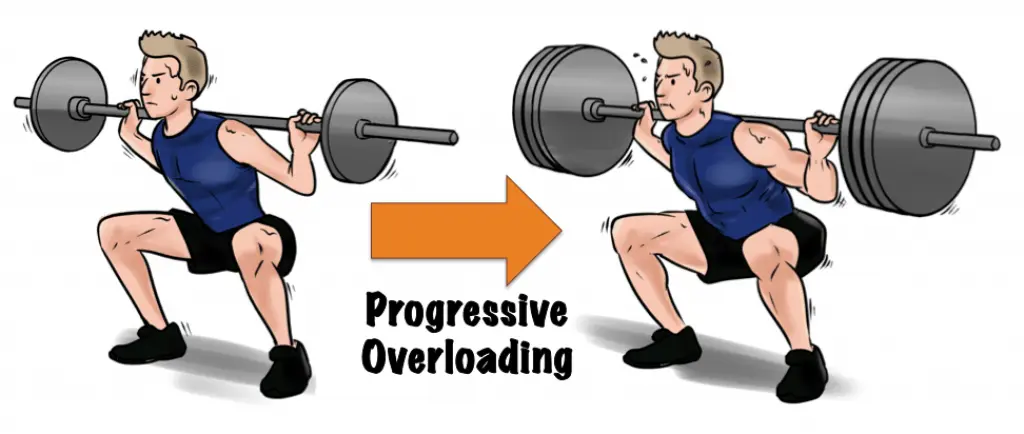



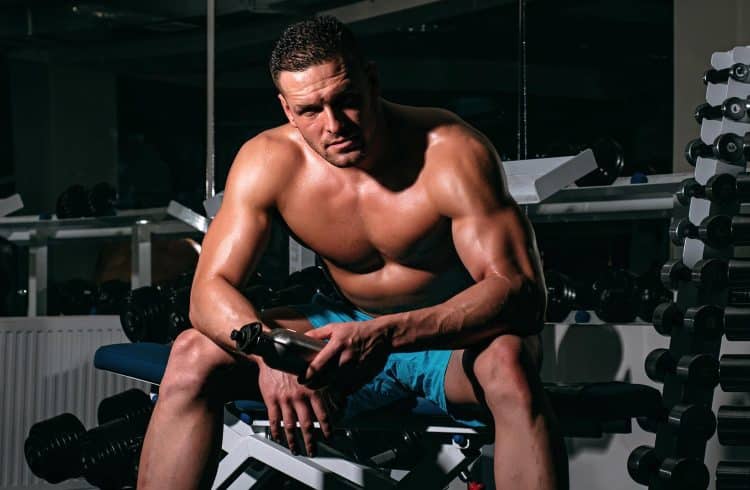



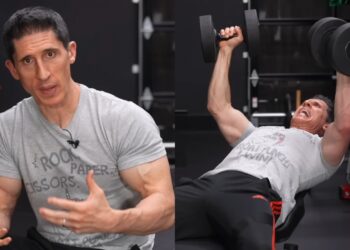

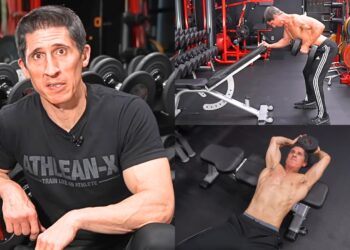



Amen brother!
It always amazes me how many people try to “major in the minors” and worry too much about the stuff that doesn’t really matter.
I always get asked what the best split is or what the best exercise is or what the best supplements are by guys who hardly ever show up at the gym two days in a row. They’ll do anything to build muscle EXCEPT freaking train!
Everyone should read this article, and focus especially on the top three points.
Totally. Hard work conquers all!